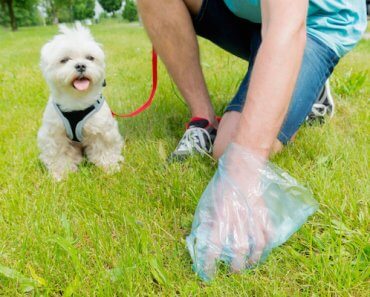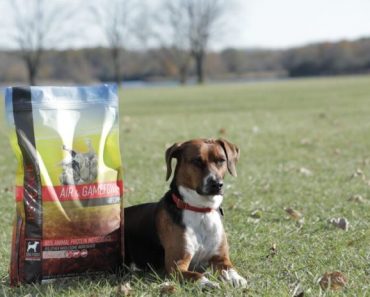
For original article click here
If you have a small dog, you may wonder if they should come along with you on your hikes. The quick answer is absolutely yes. These little dogs may be short, but they can adventure with the best of them! Indeed, corgis, Shetland sheep dogs, Jack Russell terriers and other short-statured dogs are listed by Outside magazine as some of the top active breeds to join you on your outdoor adventures.
That said, there are a few things to keep in mind that are specific to the care of small dogs. Whether it’s a Chihuahua, Pomeranian, dachshund or terrier joining you, these tips will help both you and your short-legged companion stay happy and safe on the trail.
Watch for weariness
So many small breed dogs seem to have boundless energy, so it’s easy to forget that they really are running themselves ragged in their excitement to keep up and experience the exciting sights and smells. And since their legs are shorter, it takes more effort for them to keep up the pace. It’s often up to us to stop them when they go past their breaking point.
This is particularly true if your dog is new to hiking. It takes awhile to build up strength and endurance. Just as it’s tough for us humans to go from a low-key life to tackling trails, it’s tough for our dogs as well.
“Your little one might run herself into trouble, exhausting herself or overheating if you don’t help her take it easy,” notes John Hovey on The Bark. “If your dog is new to hiking, it’s best to check with your vet and then start small, with short hikes on easy trails. Watch to see that she’s not excessively panting, wobbly on her legs or plain pooped out.”
If you notice tiredness, consider cutting the hike short and save the rest of the trail for another day.
Build up skills
Just as you would spend time building up strength and endurance for your larger dog, it’s important to spend time building up those same abilities for smaller dogs. This includes an ability to navigate over, under, around and through obstacles on a hiking trail. Some small dogs may lack the confidence or coordination to hike on rough trails, and encouraging them to tackle obstacles that are within their physical abilities will save time, energy and effort on everyone’s part.
Katie Pollak loves going on adventures with her small dog Quinci and notes on Camping With Dogs: “The ability and eagerness to jump on and over a variety of objects is helpful for so many reasons. When hiking, it is common to come across boulders, creeks, logs and more — that dogs need to be able to handle. This may sound like child’s play for a medium to extra large sized dog — but for those mini hikers, a boulder can look like a mountain to climb. Ingraining that confidence in them, early, will make their adventures easier and more enjoyable for you and them.”
Some off-the-trail activities, such as agility classes and games, can help build up these skills even faster while also strengthening the bond between you and your dog.
Pick a trail that has less elevation or a clearer path
 Our little companions can keep us company on adventures if we’re ready for the help they need tackling the challenge. (Photo: Zivica Kerkez/Shutterstock)
Our little companions can keep us company on adventures if we’re ready for the help they need tackling the challenge. (Photo: Zivica Kerkez/Shutterstock)
Small breed dogs might have the same gumption and bravery as larger dog, but they still have some undeniable and insurmountable physical limitations. This includes having bodies that just aren’t built for some trail challenges.
Veterinarian Dr. Jennifer Deming tells us, “Definitely shorter limbed/longer spine breeds like dachshunds, Basset hounds and corgis should avoid large rocks/boulders and highly uneven terrain. Leaping off of high surfaces puts a lot of load on their spines, which are already prone to herniated discs. The same goes for beagles and Pomeranians, although their problems usually occur in their necks instead of mid- and lower back.”
While rocks, downed trees and steepness of a trail are common obstacles, another important one to remember is water. Creeks and streams might seem like no big deal to larger dogs, but they could pose a serious danger to smaller dogs.
“Most dogs can swim, yes, but if crossing a swiftly moving creek deeper than their legs, a small dog could potentially get swept downstream,” says Deming. “A lot of folks will get a floatation device for their small breed dog — especially one with a handle on the top, if they hike around water a lot.”
Bring plenty of food
When you go on a hike, you know you’re going to burn a good number of calories. So, you pack extra snacks to keep your energy level up and stave off hunger. Your small dog is no different. Those little legs are a-churning on the trail, and your dog is going to need refueling.
According to The Hiking Tree, “Calorie-wise, planning for your dog’s hike is tricky and may take some experience to get just right. It really depends on daily mileage, climate, terrain, and whether you keep him/her on a leash. Count on increasing his/her calories anywhere from 50-100% while you are hiking, with closer to 100% needed if he/she is off leash.”
Keep a bag of food or high-calorie healthy treats at the ready. That way your dog can also have an energizing snack whenever you stop for a bite of trail mix.
Stop for cool-off breaks
Breaks are important for everyone participating on a hike, especially when it’s hot out. But small dogs might need more than the average number of cool-down stops. Smaller dogs are closer to the ground and thus pick up heat radiating off the sun-baked earth. They also are moving those little legs faster than larger dogs, which can cause them to hit their over-heating point sooner. And there are also some breed-specific heat challenges.
Deming tells us, “Flat-nosed (brachycephalic) small breeds like pugs, French bulldogs, Boston terriers, get hot very easily because their airways are smaller compared to longer nosed guys, and they can’t transfer heat as efficiently. Hikes need to be shorter with these guys especially in warmer weather.”
Pay attention to predator signage
 Pay attention to signs alerting hikers to predators in the area. Small dogs can look like tempting prey on the trail. (Photo: ira/Shutterstock)
Pay attention to signs alerting hikers to predators in the area. Small dogs can look like tempting prey on the trail. (Photo: ira/Shutterstock)
At the start of many trails are signs indicating what predators have been seen in the area and when they were last spotted. Some signs also warn about ongoing dangers such as the presence of alligators or coyotes. While larger dogs might be viewed as a source of protection when hiking, small dogs might instead be viewed as a tasty morsel by a predator. A coyote can make a quick meal out of a small dog wandering too far from its owner during a hike.
Watch for signage at the trailhead. If there are notices that predators are common in the area, you may decide it’s wise to keep your small dog on a leash so you have the best chance of avoiding a run-in with wildlife.
Gear up
 Gear such as a harness, an orange vest for visibility and a bear bell can all be helpful pieces of equipment when hiking with your dog in the back country. (Photo: Jaymi Heimbuch)
Gear such as a harness, an orange vest for visibility and a bear bell can all be helpful pieces of equipment when hiking with your dog in the back country. (Photo: Jaymi Heimbuch)
Smaller dogs sometimes need assistance along the trail and having the right gear can be an immense help for both you and the dog.
Conservation Canines, a nonprofit organization that works with dogs in the great outdoors all over the world — including small-statured dogs! — are firm believers in using harnesses. The team notes: “Having some kind of supportive harness with a handle so their human can help them get over the big obstacles is important. Fun teamwork like this can help maintain energy on the way up and prevent joint injuries on the way down.”
The handle on the harness can be used when lifting your dog over fallen logs or boulders, or even holding on to them as you cross streams. A harness with vivid colors like red or orange can also increase visibility, which is great if your dog tends to wander into the undergrowth a lot.
In addition to harnesses, coats for cold-weather trail blazing are also a smart piece of gear to have on hand. Pollak recommends Hurtta jackets and Ruffwear coats. “Both brands have great options,” says Pollak. “Hurtta’s tend to be warmer, with more coverage. Ruffwear coats are thinner, but less bulky, which is great for hiking.”
Bring a backpack
Say you bring food, take plenty of rest breaks and go at a reasonable pace, and still your short pup gets pooped. It may be time to carry him. Your dog might simply not be able to make the full hike on those little legs, or might need a longer rest break than you have time to take. You can use your backpack — either one made for a dog or simply a regular day pack your dog can poke his or her head out of — to carry your dog for a portion of the trail.
“The looks and sounds I get from other hikers I pass are undeniably worth that extra 10-15 pounds on your back,” writes Ashley Lake who hikes with her Pomeranian Snickers. “Smiles are seen and laughter and cooing are heard several feet back as we pass. I’ve seen grumpy hikers and focused hikers stop in their tracks and turn their frown upside-down at the sight of Snickers in my pack. That is probably one of my favorite things about bringing him along, is the happiness he brings to each person we pass. Don’t deny that happiness to your little buddy and all the other hikers on the trail!”
Have canned comebacks ready
For anyone who has already hiked with small dogs, this tip will come as no surprise. You’re going to get comments — and plenty of them. Some will be encouraging and positive, and some will question your sanity as a dog owner. It’s a good idea to have some go-to responses ready for the wide range of comments you’ll no doubt get from passing hikers so that you can minimize how much time and brain power you spend talking about your dog, and maximize the time you spend happily hiking.
Jessica Williams of You Did What With Your Wiener writes: “You will have to listen to many people you pass on the trail say things like ‘Look at that poor little guy. He/she must be tired’ and ‘Can he/she make it all of the way to the top?’. You’ll have to get used to just smiling and walking by or have some quick come-backs handy. To get you started, here are my favorites: ‘Yes, those short legs can carry him/her a long way’; ‘Oh, he/she can out-hike me any day’; and ‘He/she helps pull ME up the trail'”.
Keep it all good-natured and supportive of your small dog’s mighty capabilities, and you’re sure to have a hike filled with smiles — including the wide, joyfully panting grin on your dog’s face.
Related on MNN:
Related topics: MNN lists, Pets
9 essential tips for hiking with small dogs
There’s no need to leave short-statured pups behind when you hit the trails, but there are a few tips to keep in mind when hiking with small dogs.


























